During WW1 & WW2, many different keys were made for the U.S. Navy and Army Signal Corps. Navy keys can be identified by a prefix that begins with the letter "C". For example, CAG was General Radio, CJB was JH Bunnell, CTE was Telephonics Corp, etc.
Army Signal Corps Keys were known as "J-Series" keys because they identified their keys by a J-number ranging from J-2 through J-51 (although not every J-number actually exists)
Below are pictures of many of the Navy and Signal Corps keys.
 |
 |
 |
 |
| Signal Corps J-2 Key. Has Larger Contacts Like a Spark Key |
J-3a Key by LS Brach. Used in a WW1 Induction Telegraph Set (kd2uj.com) |
J-3a Key Lever Folds Back to Fit Inside Field Set Box (kd2uj.com) |
J-4 Silenced Instrument Key With Winker Lamp |
 |
 |
 |
 |
| US Army Signal Corps Field Telegraph Service Buzzer. Stromberg-Carlson. 1914 |
Inside the 1914 Service Buzzer |
WW1 US Army Signal Corps Induction Telegraph Set. LS Brach, Newark NJ. 1918 |
The Induction Telegraph Set Was Used to Communicate Between Trenches During the War |
 |
 |
 |
 |
| Close-Up of the Schematic and Instructions for the Induction Telegraph |
Buzzerphone Type EE1-A. Made for the US Army Signal Corps by Western Electric |
Another View of the Buzzerphone Case |
Inside the Buzzerphone Showing the Key |
 |
 |
 |
 |
| The Schematic of the Buzzerphone EE1-A |
Another Western Electric Buzzerphone Set With a Smaller Key |
Close-Up of the Western Electric Buzzerphone |
The Schematic of the Buzzerphone Set |
 |
 |
 |
 |
| Signal Corps Type EE-76 Simplex Telegraph Set. Ca. 1923 |
Close-Up of the EE-76 Nameplate |
Inside the EE-76 Simplex Telegraph Set, Showing a Key, Sounder, and Relay |
J-5 Flameproof Key by General Radio. Ca. 1918 |
 |
 |
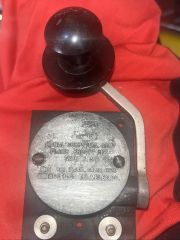 |
 |
| Close-up of the J-5 Nameplate |
Inside the General Radio J-5 |
Another J-5 Key, This One Made by Connecticut Telegraph & Electric |
J-5-A Flameproof Key by LS Brach. Ca. 1941 |
 |
 |
 |
 |
| Close-up of the J-5-A Nameplate |
Different Version of J-5 Key. Part of Type 48 Wireless Set |
J-6 Key by LS Brach |
Close-up of Brach Name Stamp |
 |
 |
 |
 |
| J-7-A Key With Winker Lamp |
The Opening on the J-7-A Key for the Winker Light (Bulb Missing) |
Close-Up of the J-7-A Nameplate |
J-12 Key |
 |
 |
 |
 |
| J-37 Key |
J-38 Morse Code Training Key |
The J-38 Was Part of a Code Training Set Which Included 5 Keys and an Audio Oscillator |
Another Picture of the Complete J-38 Training Set |
 |
 |
 |
 |
| TG5-A Field Telegraph Set Using J-41 Key |
J-43 Key. Basically a J-37 With a Circuit Closer Switch and an Extra Binding Post to Connect to a Relay |
J-44 Key. Basically a J-37 With a Switch to Change From CW to Voice |
J-45 Leg Key |
 |
 |
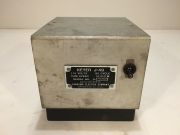 |
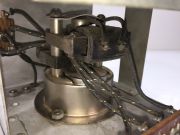 |
| J-47 Key, Which is a J-37 on a Bakelite Base |
J-48 Key |
J-49 Electronic Keyer. Sangamo Electric Co. Springfield, Illinois |
Inside the J-49 Keyer |
 |
 |
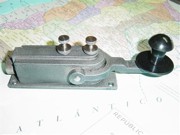 |
 |
| J-51 Vietnam Era Field Signal Light Key. Works by Squeezing the Handles Together. |
CMI-26003 Navy Flameproof Key (kd2uj.com) |
A Different Type of Navy Flameproof Key. Maker Unknown |
A Plunger Type Key Used With the Collins ART-13 Transmitter |
 |
 |
 |
 |
| A British Style WT-8Amp Key made by JH Bunnell, NY |
Another View of the WT-8Amp Key Showing the Bunnell Name |
Lionel Corp. Key Made for the US Navy. Model Number Unknown |
Close-Up of the Lionel Name on the Base |
 |
 |
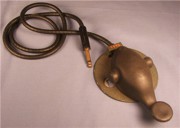 |
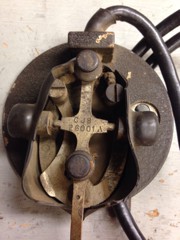 |
| CLT-26012 Navy Key. Has a Slot to Insert a Bug Wedge. Lundquist Tool & Mfg Co. (kd2uj.com) |
CJB-26012 Navy Key. Same Design as the CLT-26012 But This Version Has a Metal Knob. The Lever is Insulated From the Rest of the Key. JH Bunnell, NY |
Navy Waterproof Key. Uses a CJB-26001 Key |
Close-Up of the Key |
 |
 |
 |
 |
| US Navy Type CJB-26021. JH Bunnell, NY |
US Navy Type CAQZ-26026 Made by Brelco |
KY-605/U Lightweight Plastic Key Designed to be Strapped on the Leg. Made by Electro-Voice |
Close-up of the Electro-Voice Markings |
 |
 |
 |
 |
| RT-6 Spy Radio Transmitter Used by the CIA. Made by Motorola |
The RT-6 Transmitter Includes a Tiny Telegraph Key That Folds Out From Inside the Unit |
Type KY-5033 Military Key by Rockwell-Collins |
Unknown Miniature Key, Only 3" Long. Possibly Part of a Field Set |
































































